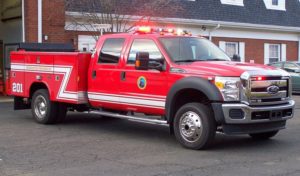Most organizations that handle 9-1-1 EMS calls have their “frequent flyers”. In some cases these are people who have chronic conditions which are either fragile or self-exacerbated by not following their discharge instructions.
Our volunteer fire department was dispatched to a “difficulty breathing” call at a familiar address. Dispatch advised us they were having trouble understanding the caller but understood that the caller’s mom was having trouble breathing. It was about 6:30 AM and many volunteers were heading in to work so there were only two of us on the rescue rig. My partner and I both lived close to this station so we were enroute within 2-3 minutes from the page and the address was just a few minutes away.
This particular patient was well known to both of us as we regularly went there several times a month. She lived with her daughter who had a significant intellectual disability but seemed to function fairly well relative to her daily living needs. In this case our frequent flyer had chronic emphysema and was on home oxygen. Typically we were called shortly after she had smoked a cigarette and would be suffering from increased difficulty breathing.
Normally we’d give her a breathing treatment, counsel her on the need to follow her doctor’s orders and get a refusal for transport signed and turn the ambulance around. Occasionally she would not respond to the treatments and she would have to be transported for stabilization.
My partner was driving so I got out with the medical kit, oxygen and headed to the residence while my partner moved the rescue around to make room for the transport ambulance. The daughter greeted me just outside the front door and I picked up enough from her to confirm her mom was having trouble breathing. Two things struck me as I entered the home. First my eyes registered a haze of smoke from a fire and second my nose registered the unmistakable odor of burning flesh. I quickly radio’d my partner to roll an engine and went on into the bedroom.
As I took in the scene I could tell why she was having trouble breathing, she was lying in bed and on fire. Whatever night clothes she had on were obviously combustible. The ignition source had been her cigarette and oxygen from the cannula in her nose fed the fire. I probably uttered something unprofessional, asked the daughter to go out front, ran to the kitchen and filled a big pot with water, came back in and put my patient out. It was about that time my partner came in with a portable fire extinguisher. He had radio’d the station and had a crew bringing an engine but still had no idea why I had requested one. He stared for a bit as he processed just what had happened, then quickly helped me manage our critical patient. She ended up dying from her injuries later that week in the hospital.
Lesson to Learn: Frequent flyers exist in every EMS system. Keep an open mind and avoid the trap apathy can bring to these calls. In this case the daughter was correct that the patient was having trouble breathing. The cause of the difficulty breathing was quite different though. You never know when a plan “B” may be called for. I’d love to hear about one of your calls where you got a big surprise when you got on scene.




WOW!
That may not have been what I said Barbara.
I imagine not, but that was my reaction to your post.